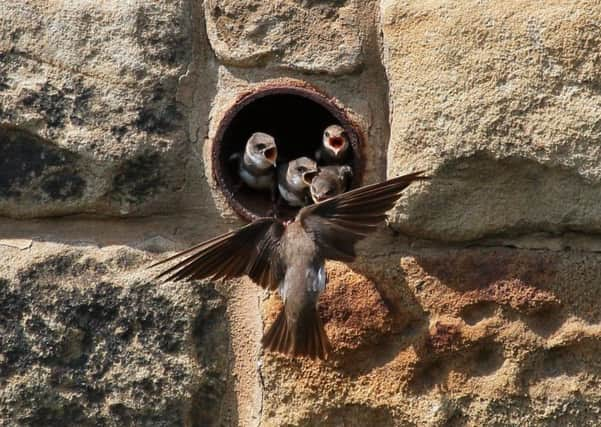Persian carpet is rolled out to shield colonies from ruthless predators


Just one mink can quickly wipe out a whole colony of sand martins, those small brown and white members of the swallow family which fly 3,000 miles from the Sahel region of Africa to nest in communal burrows deep inside riverbanks. So it was with great interest on Saturday that I discovered one pair of sand martins has found a brilliant solution to the security problem.
At Bolton Bridge, which carried the Harrogate to Skipton road over the River Wharfe before being bypassed, the birds have constructed their nest in a tiny crevice of the bridge’s stonework.
Advertisement
Hide AdAdvertisement
Hide AdI sat for an hour in the hot afternoon sun watching the adults make frequent sweeps across the river’s surface and bring back beakfuls of insects to feed their young.
The gap between the old blocks of masonry was tiny, yet the birds somehow managed to compress their bodies to what seemed like the width of a cigarette in order to reach the nest inside.
Attracted by the loud chirruping of nestlings, a carrion crow - one of the most ruthless predators of small birds’ nests - sat on the bridge parapet for ten minutes as though trying to figure out how to reach the crevice, but after a couple of swoops gave it up as a hopeless task.
Thankfully there were no minks in evidence, although I think this nesting site would defy even their remarkable climbing skills.
Advertisement
Hide AdAdvertisement
Hide AdI have been visiting the sand martin colony downstream from Bolton Abbey for more than three decades. Watching the birds swarm around the river while hawking for gnats and other flies is one of the joys of spring, so I can fully understand what drove the 19th century Wakefield ornithologist Charles Waterton to build an artificial nesting colony for sand martins in his garden at Walton Hall. He set 50 lengths of drainpipe horizontally into a bank facing the hall’s lake, and it is said that every one of them was occupied.
Such artificial colonies are now popular fixtures at today’s nature reserves and there are several in Yorkshire. All are specially designed to protect sand martins from predators.
At Rodley Nature Reserve in Leeds, for example, a sort of miniature cliff of sand holes has been constructed above a cement wall to deny access to predators.
Meanwhile, at the RSPB’s Old Moor reserve in the Dearne Valley of South Yorkshire, a colony was built from breeze blocks and terracotta pipes. But here the RSPB decided to go one step further and line the holes with Persian carpet and foam, and even put in some draft-proofing. No wonder the sand martins keep coming back year after year.